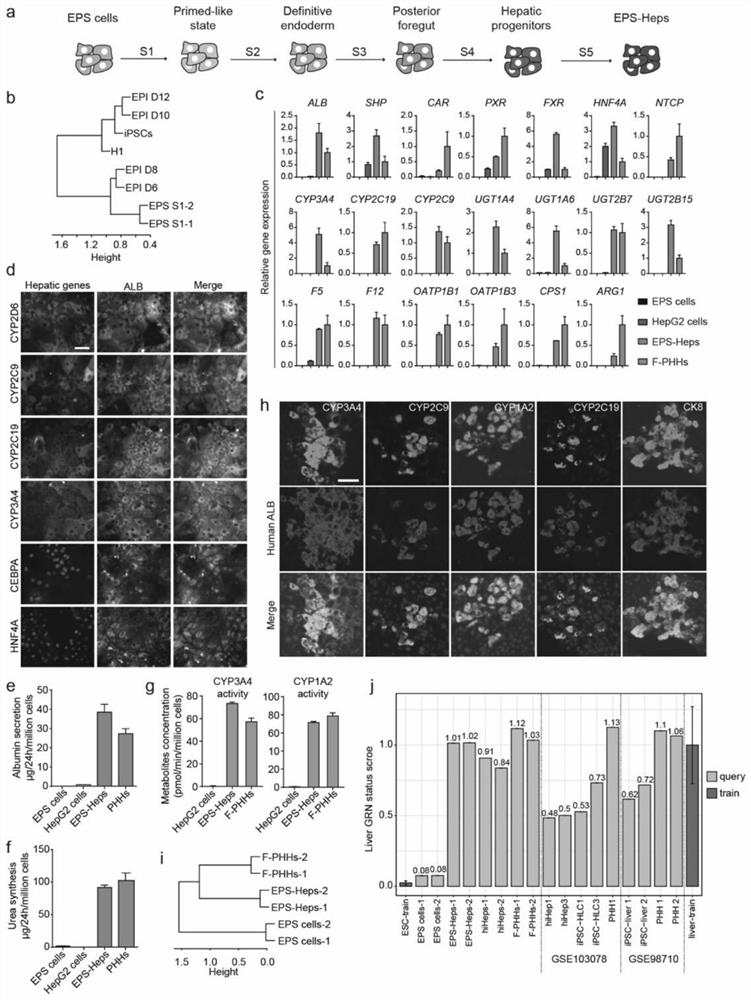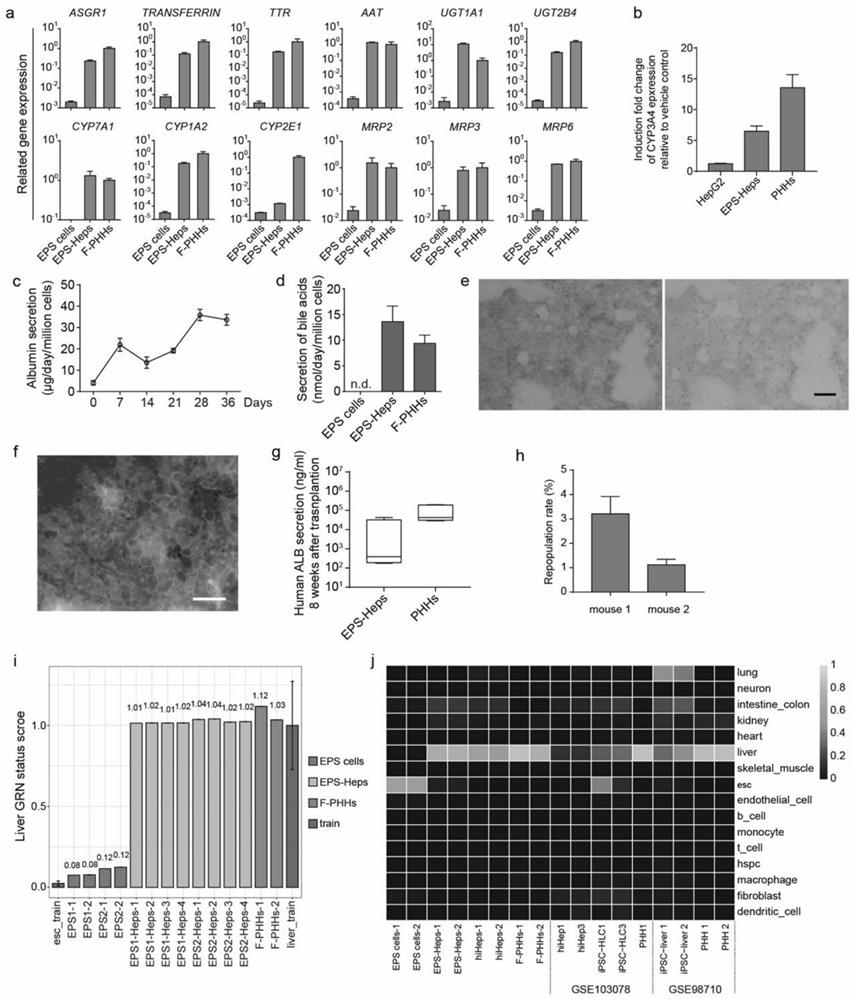Functional liver parenchyma cells and preparation method therefor
A liver parenchymal, functional technology applied in the field of stem cell differentiation
- Summary
- Abstract
- Description
- Claims
- Application Information
AI Technical Summary
Problems solved by technology
Method used
Image
Examples
Embodiment 1
[0082] Example 1 Preparation of functional hepatic parenchymal cells
[0083] We first tried a protocol for direct hepatocyte differentiation using EPS cells without a pretreatment step 6 (i.e. only S2-S5 steps), it was found that only a small amount of ALB could be produced + / AFP + Liver precursor cells ( figure 2 a).
[0084] The present inventor finds after a large amount of research and experiment, because EPS cell has original state The characteristics of pluripotent stem cells, similar to the state of human embryonic pre-implantation epiblast 4 . The cells of the pre-implantation epiblast cannot directly respond to the developmental induction signals of the three germ layers, and the post-implantation epiblast cells have the ability to develop into cells of various lineages of the embryo 7. Therefore, we try to pretreat EPS cells first, induce them to the state of epiblast cells after implantation of early embryos, and then further dock the optimized differenti...
Embodiment 2
[0112] Example 2 Identification of differentiation efficiency and properties of each cell during the differentiation process of functional hepatic parenchymal cells
[0113] The inventors specifically analyzed the cells produced in the differentiation process:
[0114] First, we found that using TeSR TM 2 medium (prime stem cell medium) pretreats EPS cells, which can induce EPS cells to become epiblast cells after early embryo implantation. This stage is the first stage (S1), and the cells obtained in the S1 stage Named EPS-S1 cells.
[0115] In order to further study the state of EPS-S1 cells, the present invention uses the method of RNA sequencing (RNA-Sequencing) to analyze and compare the whole gene transcriptome of EPS-S1 cells, induced pluripotent stem cells (iPSCs) and embryonic stem cells (ESCs) , and human epiblast cells of different developmental stages were used as controls. It was found that EPS-S1 cells had a similar transcriptional profile to epithelial cells ...
Embodiment 3
[0123] Example 3 Properties and functions of functional hepatic parenchymal cells differentiated from EPS
PUM
 Login to View More
Login to View More Abstract
Description
Claims
Application Information
 Login to View More
Login to View More - R&D
- Intellectual Property
- Life Sciences
- Materials
- Tech Scout
- Unparalleled Data Quality
- Higher Quality Content
- 60% Fewer Hallucinations
Browse by: Latest US Patents, China's latest patents, Technical Efficacy Thesaurus, Application Domain, Technology Topic, Popular Technical Reports.
© 2025 PatSnap. All rights reserved.Legal|Privacy policy|Modern Slavery Act Transparency Statement|Sitemap|About US| Contact US: help@patsnap.com



